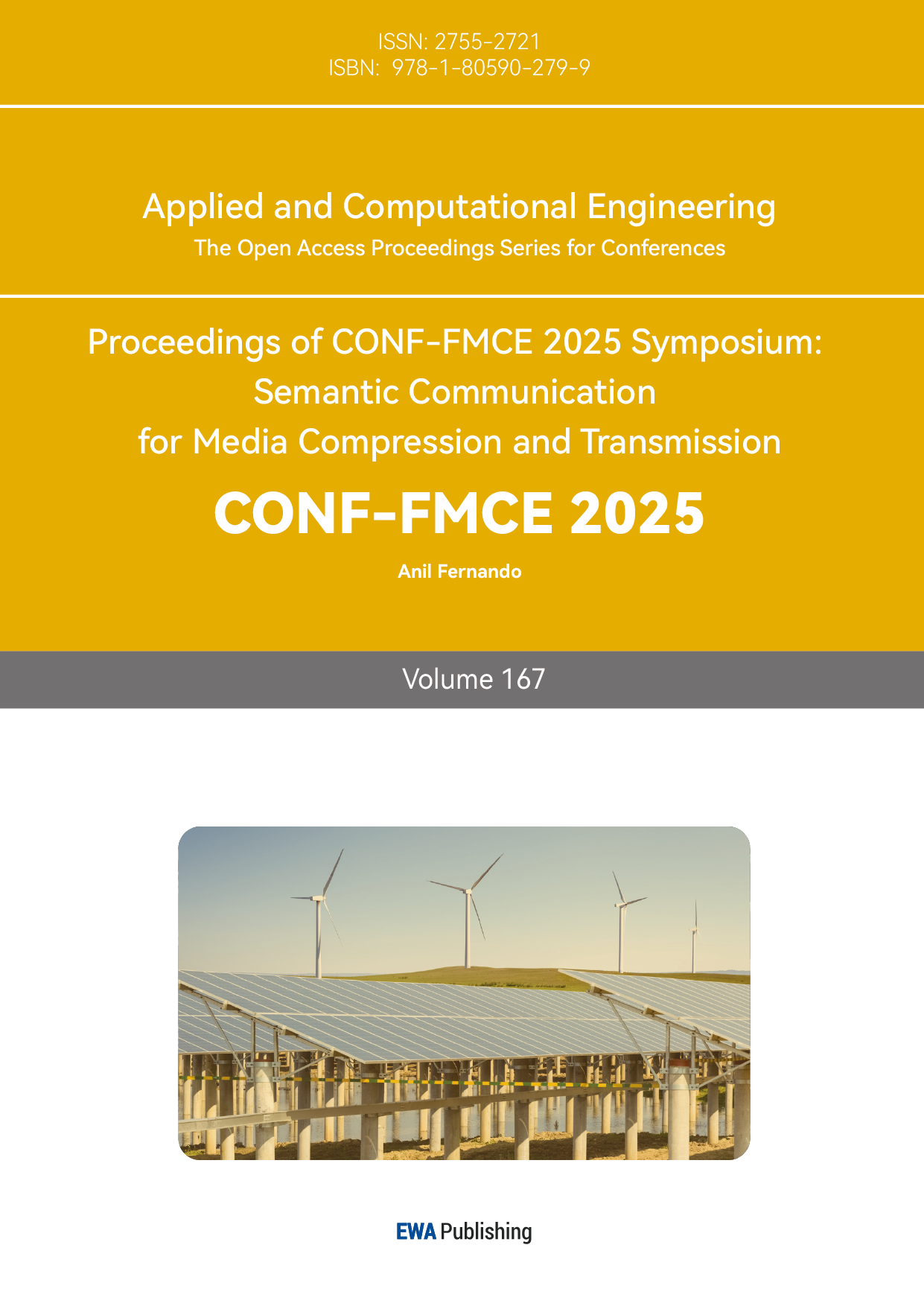References
[1]. Chawla, K.K. (2019) Ceramic matrix composites. In Composite Materials. Springer, Cham. https: //doi.org/10.1007/978-3-030-28983-6_7
[2]. Sørensen, B.F., & Goutianos, S. (2019) Micromechanical model for prediction of the fatigue limit for unidirectional fibre composites. Mechanics of Materials, 131, 169-187.
[3]. Dhanasekar, S., et al. (2022) A comprehensive study of ceramic matrix composites for space applications. Advances in Materials Science and Engineering, 2022(1), 6160591.
[4]. Yan, Y., Mei, H., Zhang, M., et al. (2022) Key role of interphase in continuous fiber 3D printed ceramic matrix composites. Composites Part A: Applied Science and Manufacturing, 162, 107127.
[5]. Wang, W., et al. (2022) Additive manufacturing of fiber reinforced ceramic matrix composites: Advances, challenges, and prospects. Ceramics International, 48, 19542-19556.
[6]. Yin, X.W., et al. (2017) Fibre-reinforced multifunctional SiC matrix composite materials. International Materials Reviews, 62(3), 117-172.
[7]. Padture, N.P. (2016) Advanced structural ceramics in aerospace propulsion. Nature Materials, 15, 804-809.
[8]. Shrivastava, S., et al. (2024) Ceramic matrix composites: Classifications, manufacturing, properties, and applications. Ceramics, 7, 652-679.
[9]. Carrere, N., Martin, E. and Lamon, J. (2000) The influence of the interphase and associated interfaces on the deflection of matrix cracks in ceramic matrix composites. Composites Part A, 31(11), 1179-1190.
[10]. Huang, H.W., et al. (2025) A thermo-mechanical localizing gradient damage model with modified Mazars strain. International Journal for Numerical Methods in Engineering, 126, 7652.
[11]. Cain, M.G., Cain, R.L., Tye, A., et al. (1996) Structure and stability of synthetic interphases in CMCs. Key Engineering Materials, 127, 37-50.
[12]. Lee, K.N., Garg, A. and Jennings, W.D. (2021) Effects of the chemistry of coating and substrate on the steam oxidation kinetics of environmental barrier coatings for ceramic matrix composites. Journal of the European Ceramic Society, 41(11), 5675-5685.
[13]. Kerans, R.J., Hay, R.S., Parthasarathy, T.A., et al. (2002) Interface design for oxidation-resistant ceramic composites. Journal of the American Ceramic Society, 85(11), 2599-2632.
[14]. Gyoktepeliler-Akin, E., Pastor, J.M., Semmler, C., et al. (2024) Environmental barrier coatings on alumina-reinforced CMCs: Experimental validation and numerical modeling of thermal stability. Surface and Coatings Technology, 494, 131432.
[15]. Xu, J., et al. (2015) Stability of interfaces in hybrid EBC/TBC coatings for Si-based ceramics in corrosive environments. International Journal of Refractory Metals and Hard Materials, 49, 339-349.
[16]. Guo, Q., et al. (2022) High-temperature interface stability of tri-layer thermal environmental barrier coatings. Ceramics International, 48(7), 9313-9323.
[17]. Wang, H., et al. (2020) Preparation and tensile behavior of SiCf/SiC mini composites containing different types and thicknesses of interphase. Ceramics International, 46(14), 22297-22306.
[18]. Li, T., et al. (2021) High strength retention and improved oxidation resistance of C/C composites by utilizing a layered SiC ceramic coating. Ceramics International, 47(10), 13500-13509.
[19]. Gerenda´s, M., et al. (2011) Improvement of oxide/oxide CMC and development of combustor and turbine components in the HiPOC program. In Turbo Expo: Power for Land, Sea, and Air, 54617, 477-490.
[20]. Chen, M., et al. (2022) Boron nitride (BN) and BN based multiple-layer interphase for SiCf/SiC composites: A review. Ceramics International, 48(23), 34107-34127.
[21]. Wang, W., et al. (2019) Excellent thermal shock resistance of Al alloy-infiltrated SiC composites. Journal of Materials Processing Technology, 269, 16-25.
[22]. Wang, X., et al. (2021) Advances in modifications and high-temperature applications of silicon carbide ceramic matrix composites in aerospace: A focused review. Journal of the European Ceramic Society, 41(9), 4671-4688.
[23]. Lee, M.C., et al. (2010) Gas turbine combustion performance test of hydrogen and carbon monoxide synthetic gas. Fuel, 89(7), 1485-1491.
[24]. Lane, J.E., et al. (2007) Hybrid oxide-based CMCs for combustion turbines: How hybrid oxide CMC mitigates the design hurdles typically seen for oxide CMC. In Turbo Expo: Power for Land, Sea, and Air, 4790, 267-273.
[25]. Eschweiler, J., Greven, J., Rath, B., et al. (2024) High-performance ceramics in musculoskeletal surgery: Current use and future perspectives. Ceramics, 7(1), 310-328.



